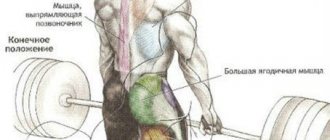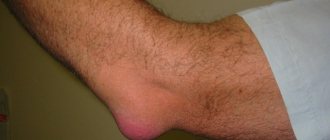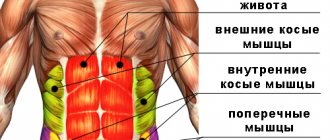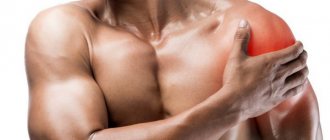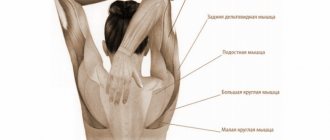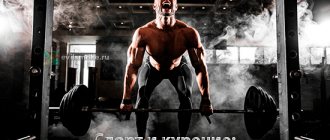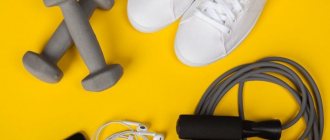Usually, painful sensations in the abdominal cavity are associated with pathology of the internal organs, for which you should urgently consult a doctor. However, everyone knows that discomfort is often caused by pain in the abdominal muscles. It should be noted that this problem is faced not only by athletes, but also by ordinary people who, due to certain circumstances, have to engage in physical labor. Muscles can ache in the same way both after abdominal exercises and after long work in the garden, since in both cases the same mechanisms are triggered.
What are cramps
A cramp is an involuntary muscle contraction that causes sharp pain and lasts from a few seconds to 10-15 minutes. Cramps can occur in any muscle, but most often in athletes, cramps in the legs: the muscles of the thigh and lower leg suffer. Less often, it can cramp your arms (skiers and swimmers), and your abs (skiers). Muscle cramps can occur during a hard workout, during a competition, and even the next day during recovery. Cramps often occur during sleep, when blood flow to the muscles slows down.
Worrying symptoms after exercise
If your lower abdomen hurts after running, and the discomfort does not go away for more than three days, you need to pay attention to the accompanying symptoms. Warning signs include:
- swelling of the legs. The training itself is not a cause of fluid accumulation. This phenomenon occurs due to a sedentary lifestyle. That is why doctors advise starting training gradually. When a person moves little during the day, the cause of water retention may be impaired blood flow in the vessels, diseases of the joint tissues, or the presence of excess weight;
- discomfort in the joints. This type of symptom often occurs in those who regularly engage in strenuous exercise. This process leads to the abrasion of cartilage, the development of an inflammatory process and the appearance of pain;
- sharp pain during active movements. If a person experiences pain of an acute or crippling nature, then perhaps the cause lies in an untreated injury or improper execution of the technique.
Any of the above symptoms requires attention and examination by a specialist.
Causes of seizures
The exact cause of muscle spasms is not yet known. They last a short period of time and depend on many factors that influence each other. The cause must be determined individually in each case by observing the body.
Overload and muscle fatigue
When overloaded, microtraumas appear in the muscles, and the transmission of nerve impulses that regulate muscle contraction and relaxation is disrupted. Instead of the usual contraction and relaxation, uncontrolled tone occurs - convulsions.
Cramps can appear from systematic overwork when muscles do not have time to recover between workouts. To avoid this, dose the load correctly and take rest days. To recover after hard workouts, get a massage, relaxing baths, and get enough sleep. Rolling out the muscles on a massage roller .
To avoid cramping during competitions, include fatigue training in your plan. For example, running on tired muscles after strength training. The stronger the muscles, the less likely it is to cramp, so strength training in the gym and repeated accelerations uphill are important in preparation.
Violation of water-salt balance
Why is the water-salt balance disrupted?
- Increased sweating and high concentration of salts in sweat
- Insufficient consumption of water and mineral drinks during exercise
- Lack of minerals and fluids in the daily diet
During exercise, the body loses moisture and minerals - this can be seen by white stains on the body and clothes after training. Sodium is lost mainly through sweat, with a much smaller portion coming from other minerals. With the loss of these substances, the water-salt balance of the body is disrupted. A lack of electrolytes leads to rapid muscle fatigue and impaired nerve conduction. If you continue to load the body in this state, the muscles will begin to cramp. Therefore, with large sweat losses, it is better to drink not just water, but isotonic drinks or non-carbonated mineral water.
Read: Nutrition for long distance competitions .
During exercise, only part of the losses can be replenished, so regular balanced nutrition is important. The body must receive enough substances from food. In cases where it is not possible to eat well regularly, you can use special nutrition. In hot climates, athletes use sports drinks or salt capsules with water.
Musculoskeletal problems
The cause of cramps can be muscle imbalance and other abnormalities. The most common is flat feet. Due to the lowering of the arch, the foot cannot absorb shock and falls inward. The load is distributed unevenly, which leads to cramps in overloaded muscles.
To prevent flat feet from interfering with your life and training, purchase orthopedic insoles, run in properly selected sneakers and strengthen your foot muscles .
Read: What is pronation and hyperpronation of the foot .
Various diseases
If cramps are in no way related to exercise and occur randomly, be sure to consult a doctor. Cramps can occur in different muscles throughout the body, including internal muscles. The cause may be various diseases, ranging from acute respiratory viral infections to varicose veins, renal failure and cirrhosis of the liver.
Recommendations for restoring health after training
Sport is the key to health. But only when the loads are carried out gradually. If a person has pain in the lower or side of the abdomen, this is not always a reason to stop exercising. To make the recovery period go faster, you should follow some rules:
- You should visit the gym no more than three times a week, and the interval between rests should be the same.
- In the first 30 minutes after physical activity, protein-carbohydrate windows are observed in the body. Therefore, at this moment you need to quickly replenish lost energy and restore injured muscle tissue. To prevent the development of the catabolic process, it is necessary to eat a portion of food that contains both carbohydrates and proteins. Fats should be absent, as they lead to inhibition of metabolic processes.
- If a person has set a goal to lose weight, then the principle should be different. To burn fat, you need to exercise for at least one hour. In this case, the first meal should take place after two to three hours.
- To preserve muscle mass and prevent the onset of pain, experts recommend consuming vitamin complexes that include omega-3, amino acids and glutamine.
- Do not forget about maintaining a sleep and rest schedule. To recover faster, you need to sleep at least 8-12 hours a day.
If you adhere to such advice, the person will feel less pain.
Why do my muscles cramp at night?
Cramps at night are not limited to people who play sports. There may be several reasons: poor circulation, muscle hypertonicity, overwork or lack of necessary substances. Night cramps can occur both from excessive exertion and from low mobility. For example, professional drivers and people who have to work on their feet for a long time. To avoid night cramps, self-massage the problem muscles, apply a little warming ointment, or relax the muscles with warm water. This is necessary to relieve hypertension and improve blood circulation.
If cramps continue to occur regularly, see your doctor to look for the cause.
Prevention of pain during running and physical activity
If you do not warm up before jogging, a sharp release of blood into the vascular bed will provoke pain.
To reduce the risk of pain during and after exercise, the following requirements must be observed:
- eat properly – 2 hours before or after training;
- do not work out “to exhaustion”, give yourself rest;
- if a person is new to sports, you need to practice gradually, and do not give the maximum load right away;
- exercising to the point of exhaustion is also not recommended;
- if you cannot breathe correctly, you should consult a sports trainer;
- to eliminate painful sensations, you need to exercise regularly, strengthening the body’s resources;
- Warm-up cannot be ruled out.
Abdominal pain after running and other physical activities can be quite severe. To avoid it, you must follow the rules of preparing for sports, avoid consuming harmful drinks and food, and generally lead a healthy lifestyle and monitor the condition of your internal organs.
Are seizures dangerous?
Short-term cramps after physical activity are safe for health. If cramps from sports appear regularly throughout the body or are not associated with physical activity at all, be sure to consult a neurologist. Muscle spasms throughout the body can be life-threatening because the chest muscles responsible for breathing or other important internal muscles may spasm. It is also worth seeing a specialist if seizures are accompanied by swelling, fever, redness of the skin and other symptoms.
If cramps appear without exercise, they can be symptoms of various diseases, such as varicose veins, flat feet, non-insulin-dependent diabetes mellitus, renal failure, Parkinson's disease, liver cirrhosis, spasmophilia, multiple sclerosis.
Source: joeallam.co.uk
Girdle pain
Girdle pain in the upper abdomen is a sign of many diseases. They may indicate food poisoning or digestive problems.
The main pathologies that cause girdle pain:
- Foodborne infections that provoke intoxication of the body.
- Inflammatory processes in the abdominal organs.
- Vascular diseases and circulatory disorders in the abdominal cavity.
- Inflammation of the vertebral discs, in particular osteochondrosis, which leads to pinched nerve endings.
- Pathologies of the nervous system.
In the upper part of the stomach, girdle pain often accompanies pancreatitis, diseases of the esophagus, duodenum or small intestine. Pyelonephritis also manifests itself as such symptoms. Girdle pain in the upper abdomen occurs with myocardial infarction or pneumonia.
Girdle pain may indicate pathology of the biliary tract and liver disease. The pain syndrome becomes especially severe when stones pass through the biliary tract.
Girdle pain may be a sign of the development of pancreatic cancer, which most often occurs in older men. Wandering shingles that move to different places are usually a sign of an abscess, tumors, hepatitis or cirrhosis of the liver.
What to do if your muscles cramp
If your muscles cramp during training or competition, stop and try to slowly stretch the sore muscle. Most often, cramps appear in the calves, in this case, pull your toes towards you. The same method helps when the foot cramps. Stretch the muscle until the cramp goes away. When the pain goes away, you can continue moving.
Another effective emergency treatment is to prick the muscle with a needle or pin. Don’t forget, the needle must be clean, pre-treated with alcohol.
When the acute phase has passed and there is no acute pain, do a massage, relaxing baths and stretching, you can apply a little warming ointment.
So that your muscles don't hurt
So what's the solution? - you ask. It is clear that the muscles will still hurt, but you can reduce these sensations.
- Always warm up before exercise; at least a few minutes of running or jumping will prepare your abdominal muscles for work.
- Don’t take on new exercises too eagerly—increase the number of repetitions gradually, from session to session.
- The same applies to weights. Only gradual weight gain can lead to success without greatly affecting your health.
- After training, do a short cool-down - lie on your stomach and do a “cobra” - lifting your body and looking forward, stretch your abdominal muscles.
- At home, lie down for half an hour in a warm bath with sea salt (you can also use regular salt). You will immediately feel relief.
Well, in general, a little pain after training will go away in two days, and you can conquer new heights!
I’ll say right away that if your stomach hurts after doing abs, it’s probably one of the diseases: gastritis, ulcers or erosions. In such cases, an increase in pressure on the stomach area leads to its compression, and this leads to pain and increased release of bile. Here you need to immediately visit a gastroenterologist. If the doctors have not found the disease, we continue to study.
Prevention of seizures in athletes
Follow these simple tips to avoid seizures:
- Do a warm-up and cool-down. This improves blood circulation, prepares the body for stress and recovery.
- Increase your training volume gradually, starting strength training with the lightest weights
- Take a vacation. During recovery, the muscles “digest” the load and adapt to it. Relax your muscles with a massage, bath, sauna
- Don't forget about restoring your nervous system. Get enough sleep, take complete rest days from training
- Stay hydrated - drink water or isotonic water. In hot weather over long distances, try to drink mineral water (still), isotonic water or take salt capsules
- Make a competent training plan that will lead you to your goal. Gradually adapt your muscles to the loads, be sure to do strength training. For example, if you are going to run a marathon in the heat, it is not enough to train for 5 km in cool weather.
Always monitor your body and pay attention to the conditions under which cramps occur. It could be hot weather, increased sweating, or some specific load. Then you will know the weak points of your body and work on them.
How to understand that the cause of pain is an abdominal injury?
It is very rare that injury is the cause of abdominal pain after training, but knowing what to do in this case is important for every athlete. You will recognize the injury easily - the pain in the press will be quite strong and sharp, and may radiate to the ribs. You are most likely to be injured in the following situations:
- incorrect approach technique,
- irrational load on various muscle groups,
- no warm-up has been done, so the muscles are not warmed up.
What do experienced athletes advise you to pay attention to? Firstly, the nature of the pain. With abdominal injuries, the pain is mainly of a pulsating nature. In this case, hematomas and bruises may appear in the abdominal area. This means that the muscles did not have time to fully recover, and due to overload, the fibers began to tear.
Don’t lie around after training, it’s better to do a cool-down - stretch your abdominal muscles and others
You should visit a doctor as soon as possible if you have a “hernia bulge,” advises hudeem-bez-problem.ru. Then, when this hernia is strangulated, increased pressure occurs on the internal organs. If you delay going to the doctor, you may well end up with tissue necrosis.
Upper press
When you pump your upper abs while lying on the mat, you must remember that your chin should not be pressed to your chest; on the contrary, the distance between the upper chest and chin should be the size of a tennis ball. Keep an eye on this all the time.
The correct position of the hands is also important - they should only lightly touch the back of the head, and in no case should you put pressure on the back of the head with your hands. This common beginner mistake can lead to overexertion.
Concentration should be on the muscles that you are pumping. If you think about something extraneous, then the work of the press can be taken over by other auxiliary muscles (the same muscles of the neck). Hence the tense red face - with the correct technique, the muscles of the face and neck should not tense.
